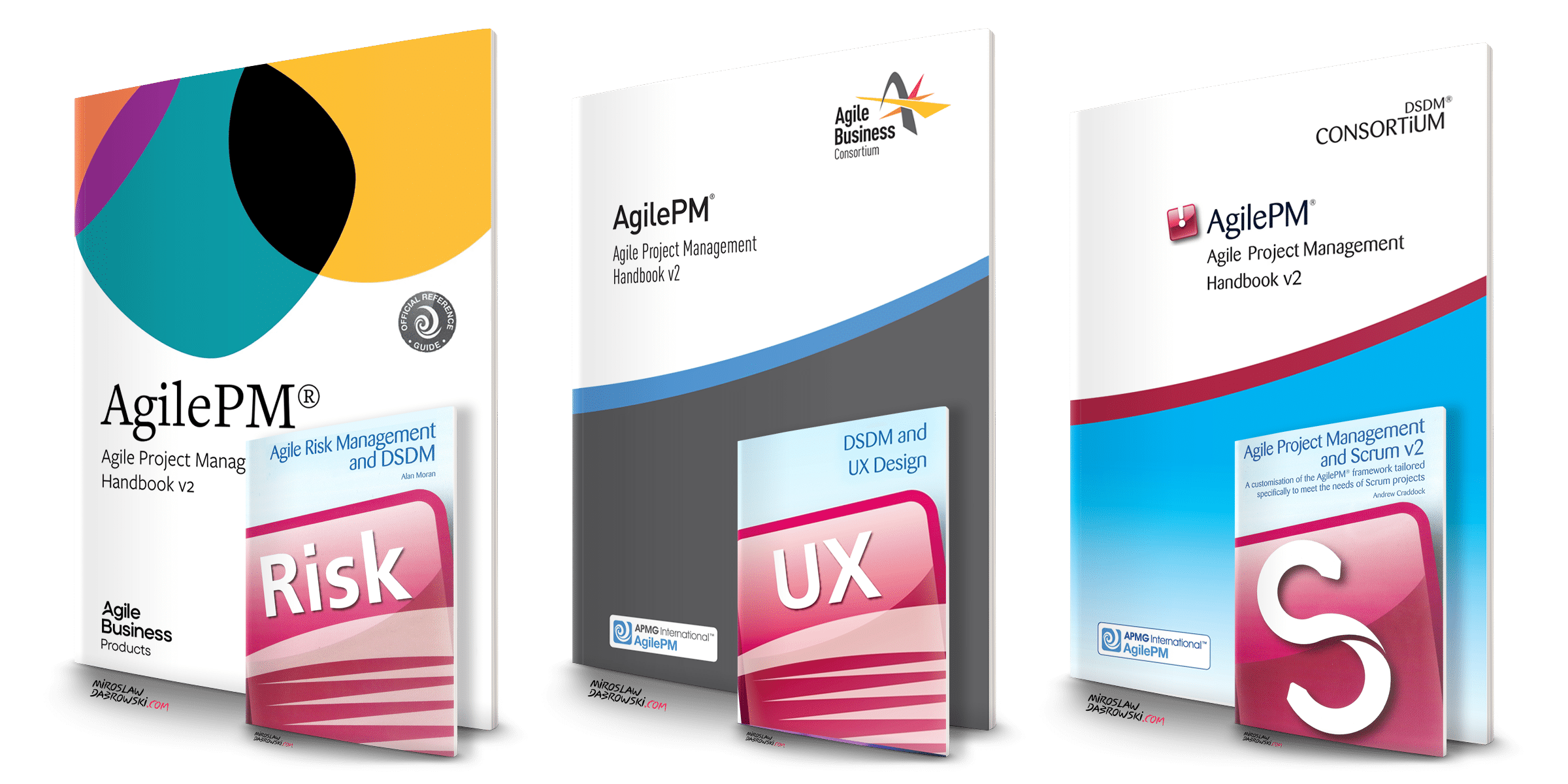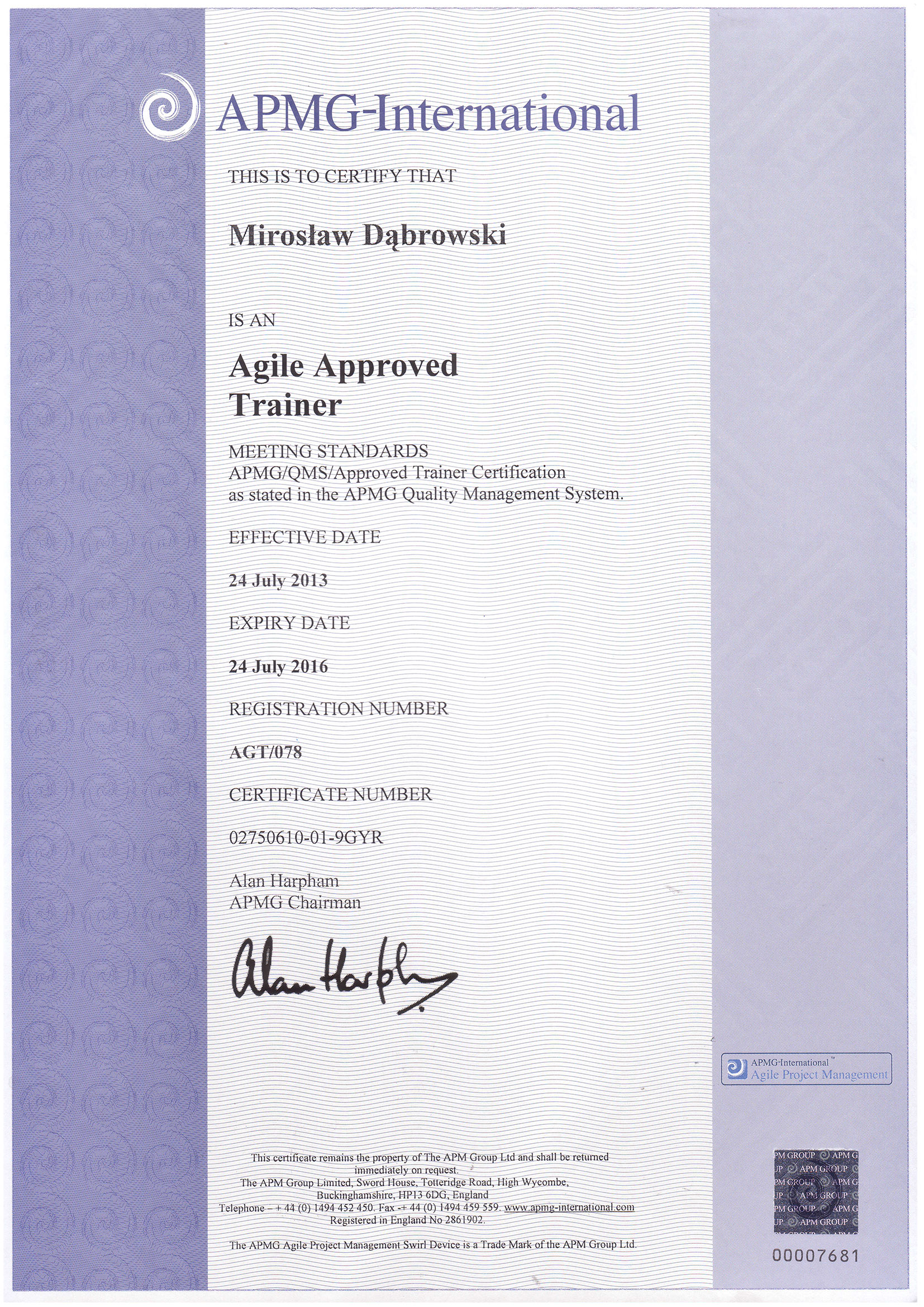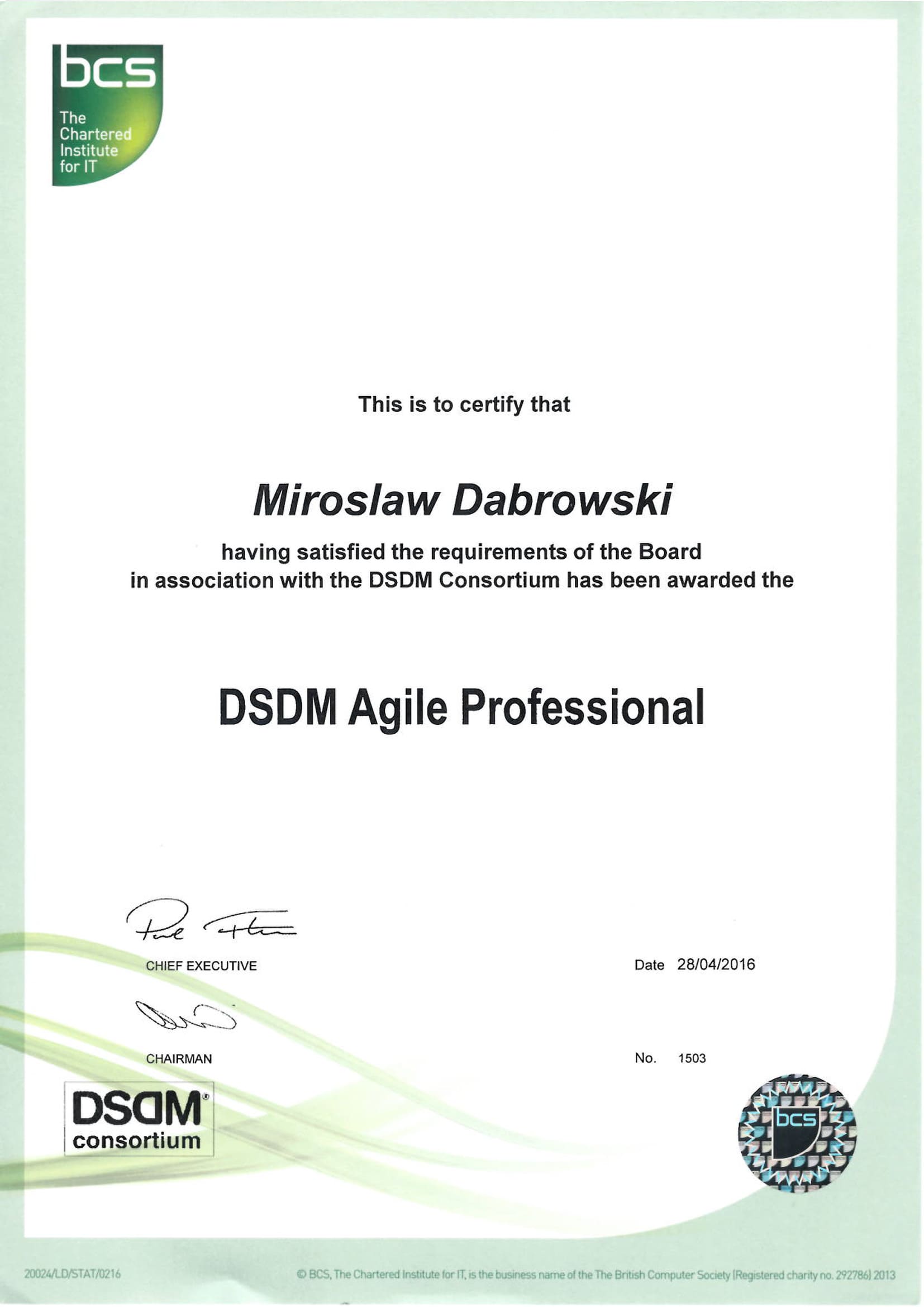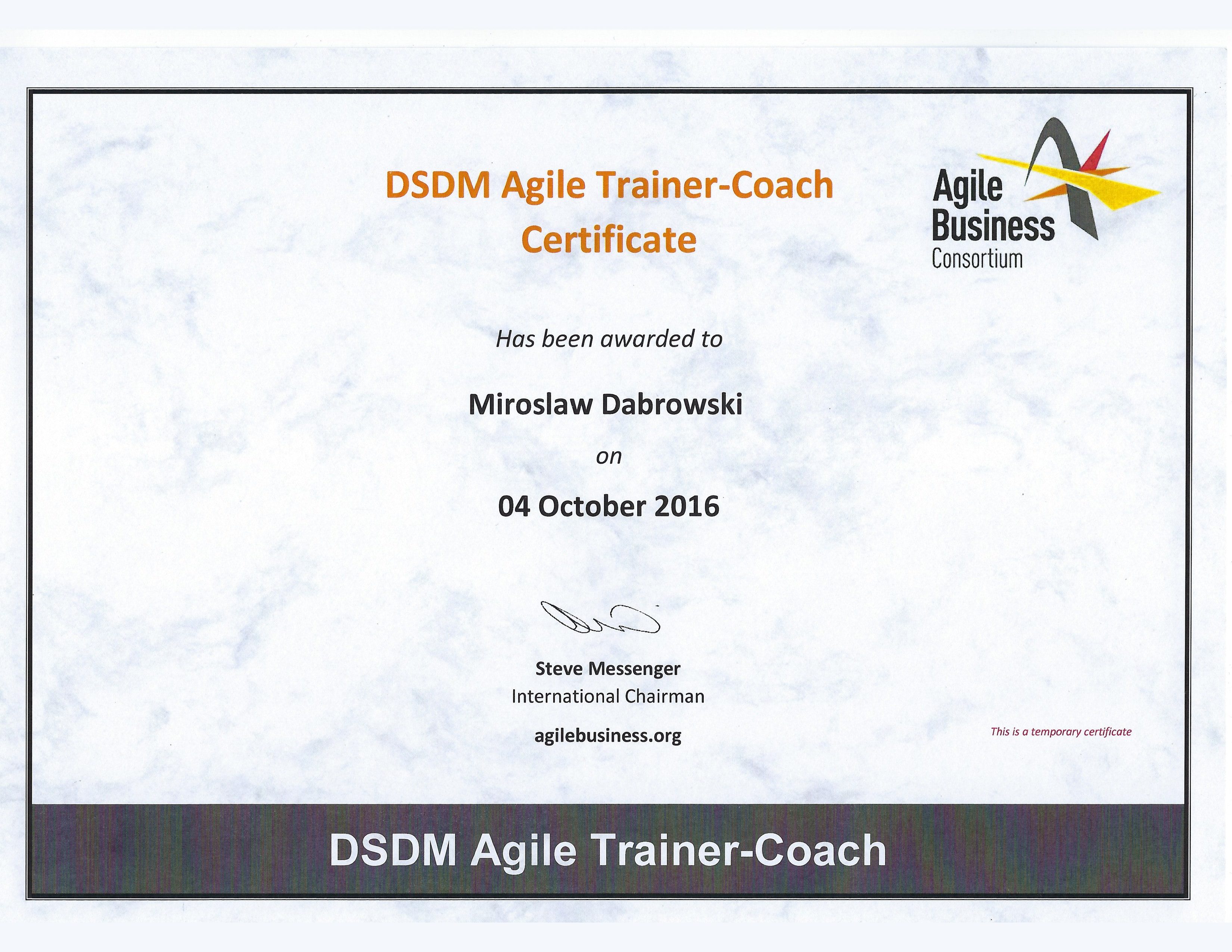This AgilePM Exam Simulator took countless hours to make (inc. UX). Each question was personally, and meticulously analyzed and verified. Share, like, and pass your exam with flying colours!

500
questions
Score per
category
Answers
explanations(*)
Fullscreen,
focus mode
Questions
flagging
Issue
reporting
*sometimes I will publish a new exam or add questions first (as MVP), and then I will work on explanations in the following days. So, no worries, Houston, everything is okay!
Question Bank
See questions distribution across DSDM and AgilePM categories in the questions bank. You need to be proficient in those categories to pass the official AgilePM Foundation exam.
Materials
Download, free materials from AgilePM like Reference Cards, Project Approach Questionnaire (PAQ), Project Health Check Questionnaire (PHCQ) and AgilePM Examination Syllabus.
AgilePM Question Bank
across DSDM and AgilePM V2 categories
AgilePM Materials
Additional AgilePM materials and downloads for self-learning
AgilePM Syllabus
Official AgilePM syllabus for Foundation and Practitioner exams
The document was created with training companies in mind, so-called Accredited Training Organizations (ATOs). It provides information on the scope of the AgilePM exams, thereby allowing for the design of training and training materials following the requirements of APMG so that the training and materials fully prepare candidates for Foundation and Practitioner exams.
Does reading the AgilePM Syllabus make sense for you?
So what value does this provide for you? By reading the teaching syllabus, you will learn about the scope of the AgilePM exam questions for AgilePM Foundation and AgilePM Practitioner exams, and thus, which topics (and to what extent) from the official AgilePM® Handbook are covered in the exams, and which are not. For example, not everyone knows that the Foundation exam does NOT cover the entire textbook.
AgilePM Handbook
The main knowledge source for the AgilePM exams
The official AgilePM® qualification/exams (Foundation and Practitioner) AND official, accredited AgilePM® courses are entirely based ONLY on the content covered in the publication below:
- Agile Project Management (AgilePM®) Handbook v2
- Pages: 240
- ISBN-10: 0992872723
- ISBN-13: 978-0992872724
AgilePM V2 Handbook revisions over the years
As a side note, it’s worth knowing that AgilePM version 2.0 was introduced just before the DSDM Consortium rebranded itself to the Agile Business Consortium. Why does it matter?
Well, it just so happens that due to the rebranding, there are three handbook revisions (with different covers) of the AgilePM 2.0 methodology. Each of them is the same, so if you grab any of them for learning, it’s okay. (eBay is your friend)
AgilePM PAQ
Project Approach Questionnaire (PAQ)
Classical DSDM PAQ with several additions. It is still a part of the method, and 20 years ago it was considered a valuable addition to the whole Agile world, so here it is. It’s a bit sad that over the past 30 years, the DSDM Consortium (now Agile Business Consortium) has not developed the PAQ into a full-fledged online tool for risk management in agile projects, such as AgilityHealthRadar.
The intended audience for the PAQ is Project Managers, but in my opinion, the audience consists of experienced change managers, Agile Coaches, and anyone involved in change/transformation management-related activities. The use of PAQ should not be performed by inexperienced individuals. Practice is needed to properly assess culture, project maturity, and the products themselves (and everything in between). If you have designed Agile project management principles (not just one project, but the “rules of the game” across the entire organization from the PMO) in both a traditional, “hierarchical” organization and in a healthy, evolving Agile culture – then you know what I mean. With such a background of experience, you know how to interpret the questions posed in the PAQ correctly and how deep each of them can be. Unfortunately, a significant portion of accredited AgilePM trainers do not have this experience because APMG does not require any practical experience in conducting agile transformations in the accreditation process. Only theoretical knowledge of the methodology is assessed.
AgilePM V1.2 Reference Card
Project Phases vs Products vs Roles vs Reponsibilites Matrix in AgilePM
A reference card based on the DSDM Atern V2 & AgilePM 1.0 – 1.2 (in short DSDM was rebranded as AgilePM). The reference card presents a matrix of project phases, products (also known as management products or artefacts), roles, and their respective responsibilities as defined by the AgilePM regarding who, when, and what regarding specific management products.
Woho! 😱 This AgilePM Reference Card looks scary!
Do not treat this overview as a dogmatic approach, but rather as an inspiration. However, based on my experience, if you deal with projects in regulated environments with audits and governance or risk control activities highly embedded within the organization’s culture, this overview was a good starting point for me to show scepticists, that some Agile methodologies have governance within.
AgilePM V2 Reference Card
Project Phases vs Products vs Roles vs Reponsibilites Matrix in AgilePM
Same as the previous one, just for the AgilePM 2.0 (current version). The reference card appears to be a little bit more compact because the authors of the AgilePM V2 method decided to make things, let’s say, more approachable for newcomers. The concept is the same as in the previous Reference Card: project phases, products, roles, and their respective responsibilities as defined in the Handbook with information on who, when, and what is being done regarding specific management products.
Woho! 😱 This AgilePM Reference Card looks scary!
Once again, do not treat this overview as a dogmatic directive from AgilePM authors, but rather as “food for thought.” However, based on my experience, this overview was a good starting point for coaching and mentoring activities that I had with some PMs and Heads of PMOs during the Agile Transformation in some banks.
AgilePM V2 PHCQ
Project Health Check Questionnaire (PHCQ)
The Project Health Check Questionnaire (PHCQ) was a tool that my team and I used (probably 10-15 years ago) during auditing or controlling activities for DSDM/AgilePM projects, where some clients (mainly PMO office heads) needed to understand the audit process for agile projects to be able to do it independently, building new guidelines within the organization.
More modern alternatives to AgilePM PAQ
Nowadays, we have many much better online, interactive, collaborative tools that do what PAQ is supposed to do, but much more effectively. They are faster, better, and designed with teamwork and reporting dashboards in mind. The most recognizable one that I can recommend based on my experience is AgilityHealthRadar. On a smaller scale, customized tools like retrospectives also do the job right (see list of Agile Tools and Software).
Quality is a habit (Aristotle)
A habit backed by 20 years as a trainer and 15 years as an Enterprise Agile Coach
”"Exam simulators for Agile exams, those poor in explanations of questions and answers, one could say that they test our intellect in an intriguing way 😎 interpreting the principle: No Feedback, No Learning.
in an original way. Agile is based largely on feedback. Here is the irony, some simulators, (both free and paid), do not provide any feedback. Agile at its best.”
After over 20 years in IT and personally clearing more than 200 certifications in IT, InfoSec, management, coaching, mentoring, and training, 15 of which have been in Agile Transformations, Agile Leadership and Governance, and more than 10 years as an Accredited AgilePM trainer and (the first in Poland) DSDM-Agile Trainer-Coach, it’s time to give something back to the community. Just as many great people helped me along the way, I want to contribute to the community, because the truth is that none of it matters if you don’t share and help others.
Don't be fooled by AgilePM exam dumps
I hope you will find my exam simulator valuable on your journey. The simulator is not just a tool to help you pass your upcoming AgilePM Foundation exam, but also to learn and understand the knowledge areas associated with the specific domain you are studying. Passing an exam shouldn’t be the ultimate goal in itself but rather a checkpoint in your never-ending self-development journey. The goal of the AgilePM Exam Simulator is to provide you with as much learning feedback as possible, so you won’t waste your time memorizing questionable AgilePM exam dumps or shady AgilePM question databases with no prior verification of correct answers and with no rationals to questions.
Don’t hesitate to contact me if you have any questions. Moreover, should you encounter any issues, bugs, or typos in the exam, your assistance in enhancing the simulator would be greatly appreciated. Please utilize the pink icon during the exam (under the navigation buttons) to submit any problematic questions for review.
AgilePM® and AgileBA® are registered trademarks of Agile Business Consortium Limited.
The Swirl Device logo is a trademark of The APM Group Limited.
The APMG-International™ Agile Project Management™ and Swirl Device logo is a trade mark of The APM Group Limited.
Their respective organisations own all intellectual property rights of products and logos on this website.
Your voice matters
Feedback appreciated!





![AgilePM - Project Approach Questionnaire (PAQ) [v1.1 EN]](https://miroslawdabrowski.com/wp-content/uploads/2024/04/AgilePM-Project-Approach-Questionnaire-PAQ-v1.1-EN.jpg?ver=1713644462)
![AgilePM V1 - Project Phases vs Products vs Roles vs Reponsibilites Matrix [v1.5, 11.2014, EN]](https://miroslawdabrowski.com/wp-content/uploads/2014/11/AgilePM-v1-Project-Phases-vs-Products-vs-Roles-vs-Reponsibilites-Matrix-v1.5-11.2014-EN.jpg?ver=1713757918)
![AgilePM V2 - Project Phases vs Products vs Roles vs Reponsibilites Matrix [v1.1 08.2016 EN]](https://miroslawdabrowski.com/wp-content/uploads/2016/08/agilepm-v2-project-phases-vs-products-vs-roles-vs-reponsibilites-matrix-v11-082016-en.jpg?ver=1713765641)
![AgilePM V2 - Project Health Check Questionnaire (PHCQ) [v1.1, 06.2015, EN]](https://miroslawdabrowski.com/wp-content/uploads/2024/04/AgilePM-V2-Project-Health-Check-Questionnaire-PHCQ-v1.1-06.2015-EN.jpg?ver=1713643045)



